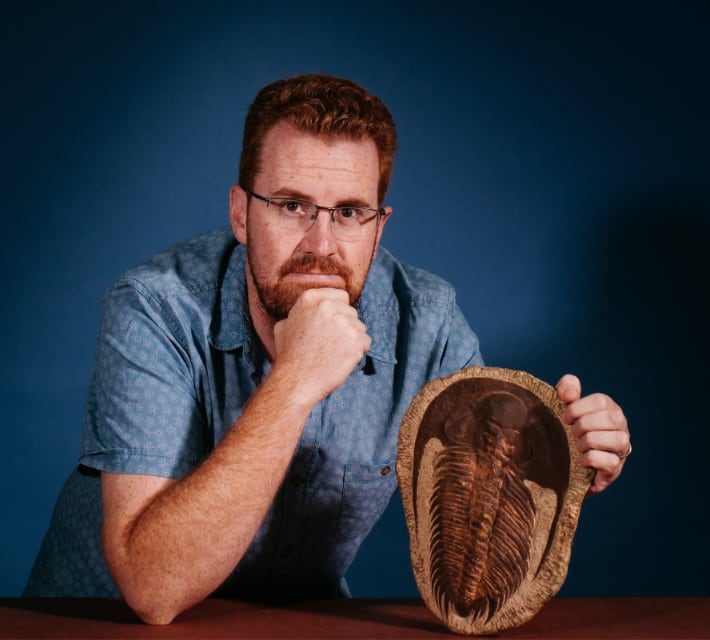A unique window into an ancient world on Kangaroo Island, off the coast of South Australia, has yielded the discovery of a giant trilobite species, with antennae and walking legs preserved, in 513 million-year-old rocks.
Trilobites are an extinct group of marine creatures related to modern crustaceans and insects. At up to 30 centimetres in length, this new trilobite from the Cambrian Period is the largest yet found in Australia of this age. The new species has been named Redlichia rex. Rex means ‘king’ in Latin, and has the same meaning as in Tyrannosaurus rex.
This research was jointly undertaken by palaeontologist, Professor John Paterson from the University of New England (UNE), and colleagues from the South Australian Museum and the University of Adelaide.
It is the latest in a sequence of important discoveries from Kangaroo Island's Emu Bay Shale fossil deposit, which preserves important evidence of the first evolutionary arms race between ancient predators (such as Anomalocaris) and their prey.
Some of the Emu Bay Shale trilobites show evidence of injury caused by shell-crushing predators. This supports recent work by the University's Palaeoscience Research Centre, which shows that over 500 million years ago, novel and efficient forms of predation forced adaptations in prey species, and so fuelled an evolutionary "big bang", the effects of which persist today.
In a paper published last year, UNE PhD student Russell Bicknell and colleagues reported that some shell-crushing marine animals had already evolved optimal biomechanical performance for their task over half-a-billion years ago. The fossil species he studied was perhaps even more effective at crushing shelly prey than its modern counterpart, the horseshoe crab.
Earlier this year, Professor Paterson was the lead author on a study that concluded this evolutionary arms race and the appearance of other important biological innovations that re-engineered the planet's marine ecosystems happened much faster than scientists had assumed – in just 20 million years, "the blink of an evolutionary eye", rather than 56 million years, as previously estimated.
This new trilobite discovery now provides important information about Earth’s first predatory giants.
“Redlichia rex would have certainly been the terror of the trilobites, and most other seafloor creatures for that matter. Bigger than a dinner plate, this species is one of the largest animals living in the oceans at that time.”
“The discovery of exquisitely preserved specimens, including the walking legs armed with spines for crushing shells, shows that some of the first marine animals were already well-equipped killers.”
“This new trilobite demonstrates that predatory giants and their sophisticated weaponry first appeared during the earliest phase of animal evolution.”
“The find shows that Cambrian fossil deposits like the Emu Bay Shale on Kangaroo Island still have much to tell us about the evolution of marine life.”
The Redlichia rex study was published this week in the Journal of Systematic Palaeontology.


